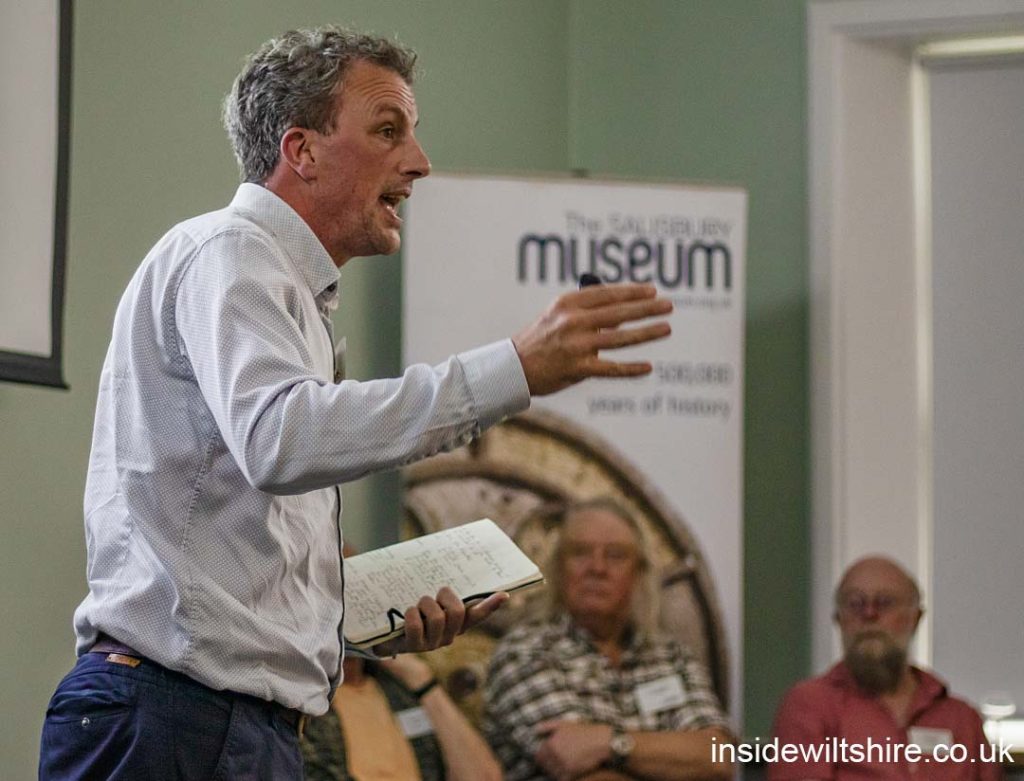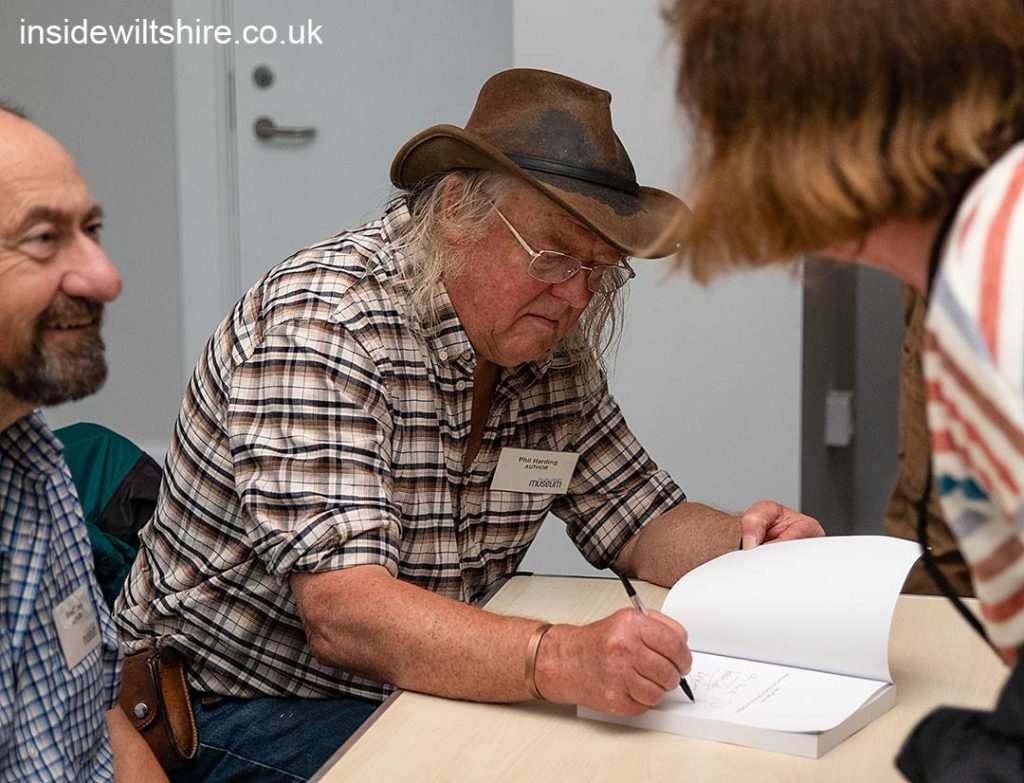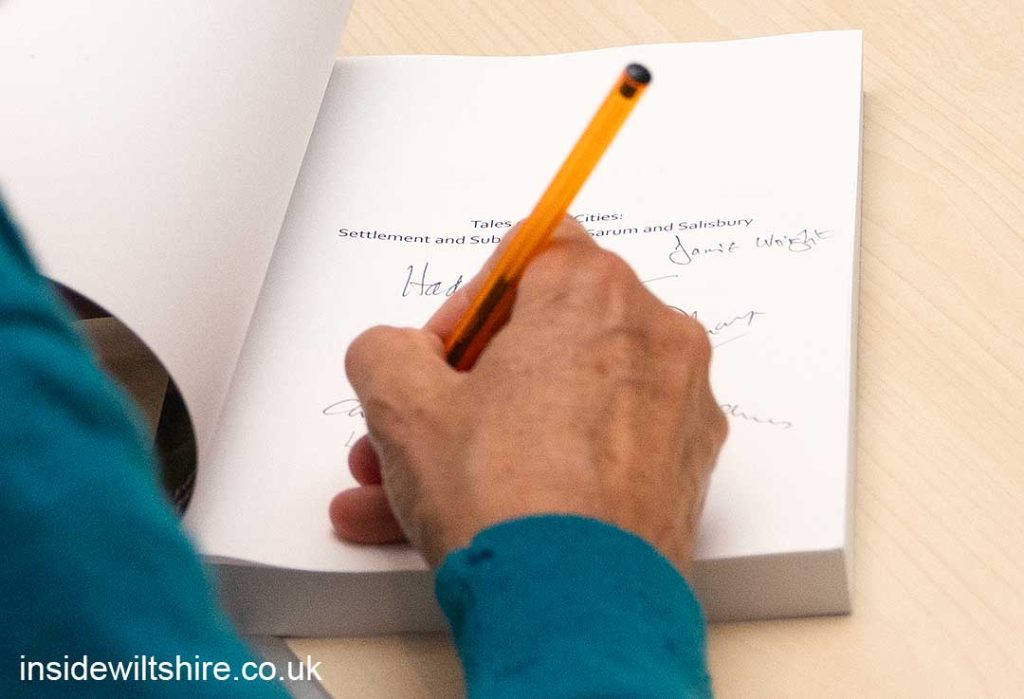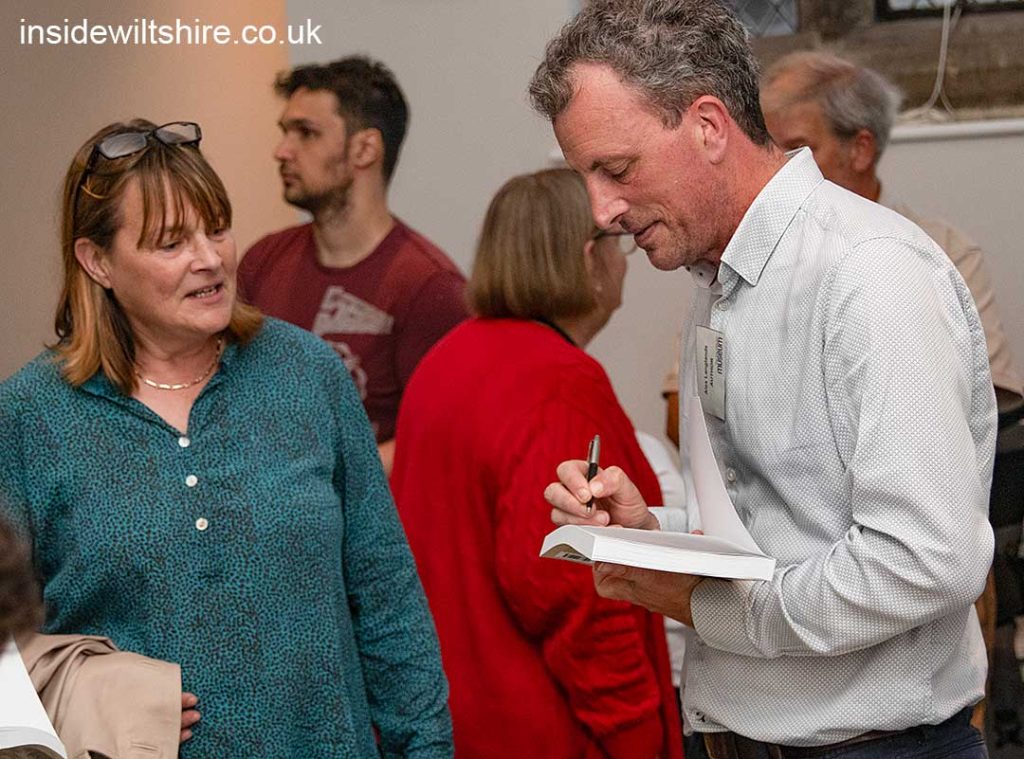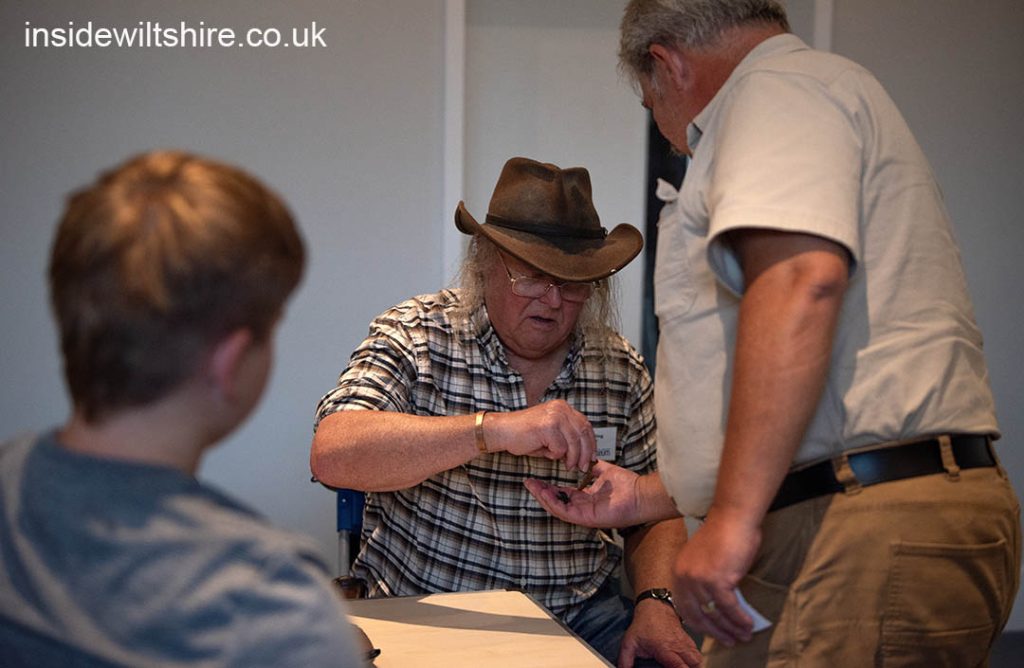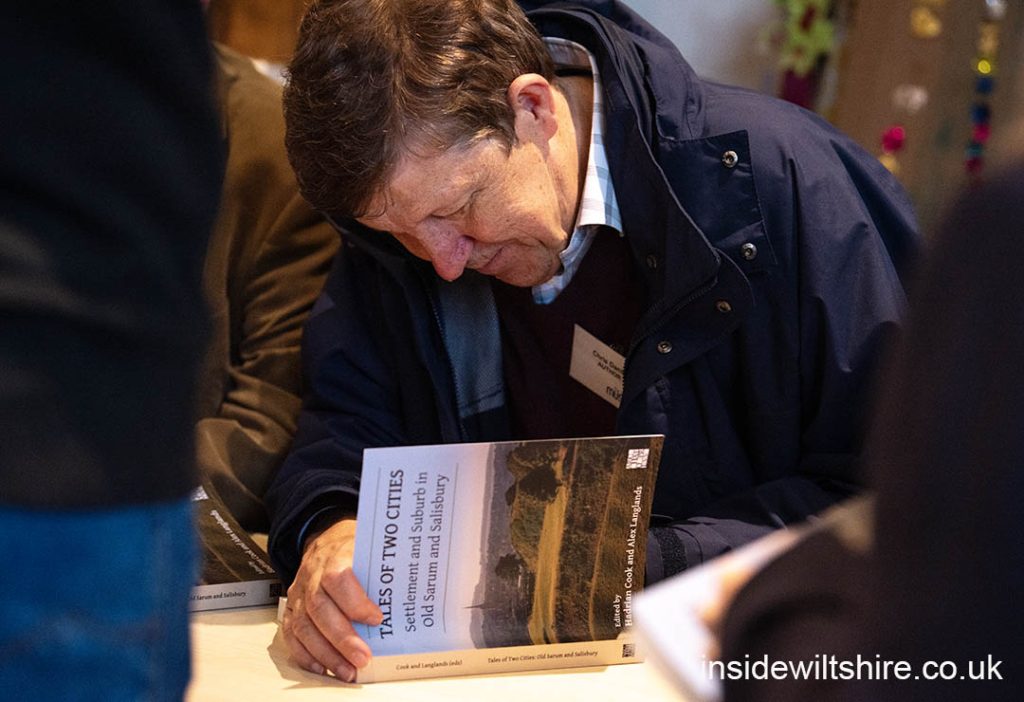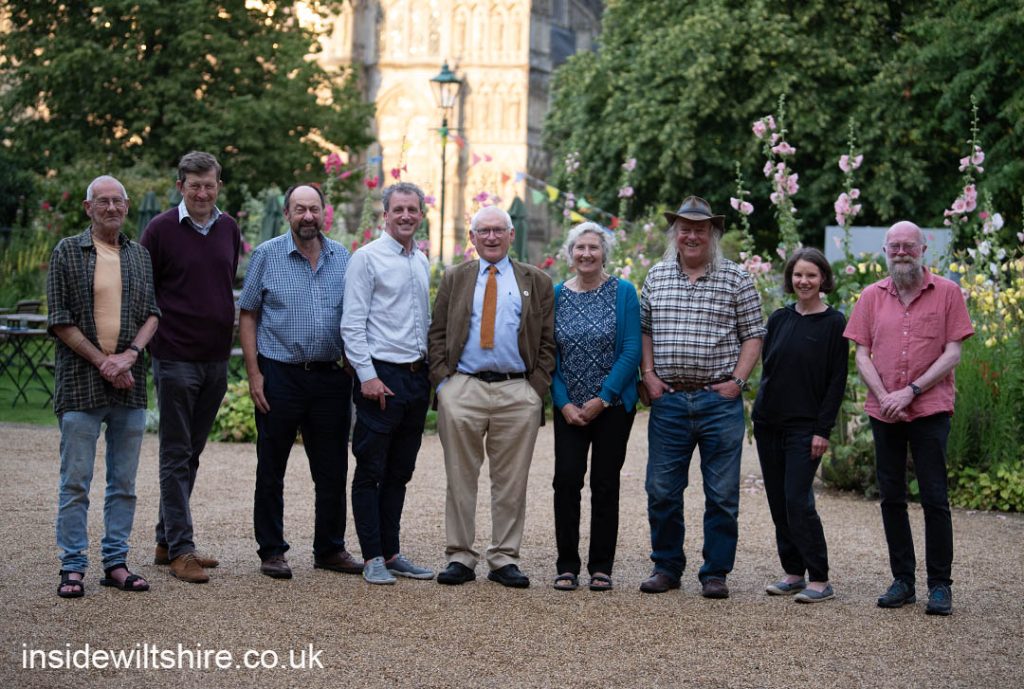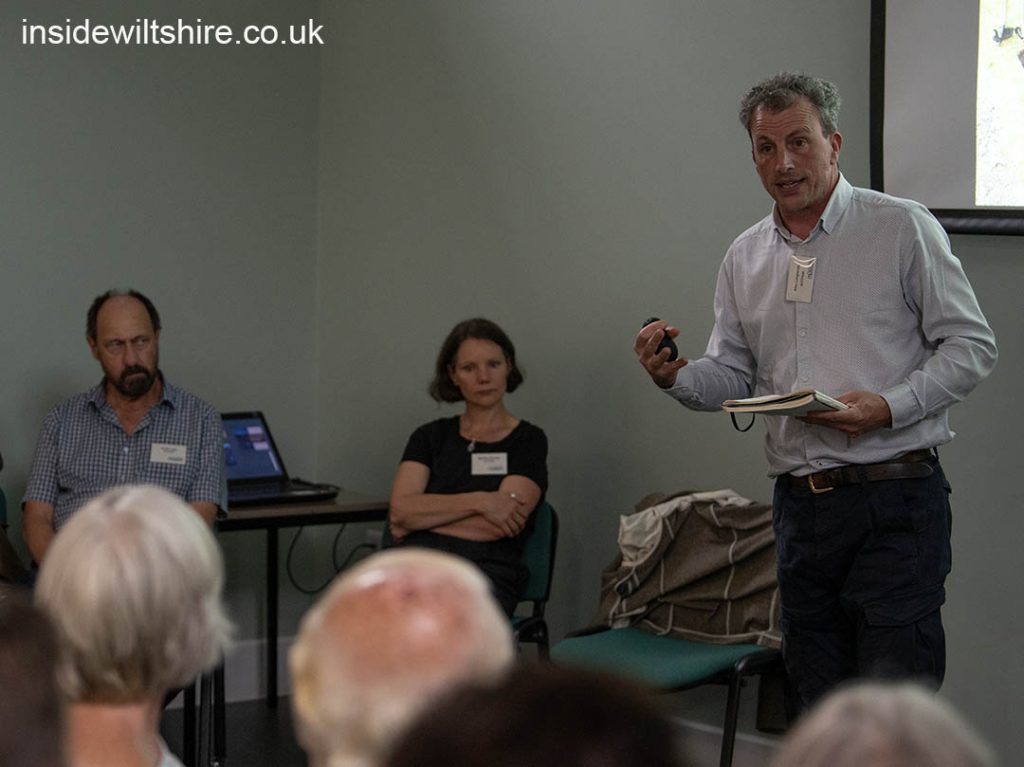The authors
Alex said: “I’m delighted to have launched Tales of Two Cities: Settlement and Suburb in Old Sarum and Salisbury at Salisbury Museum, in advance of the Festival of Archaeology, 2024. That the event was sold out is testimony to the enduring appeal of the city’s medieval past and the questions that remain about its origins and its shift in the early thirteenth century from the hilltop focus in the north to its present location on the floodplain. For me, Tales of Two Cities was a chance to bring together all the details from over a decade of research into Old Sarum and to set it in the context of the wider area through a series of excellent papers offered by a range of expert contributors.

“I hope now that there is a clearer picture of what the medieval suburbs surrounding Old Sarum may have looked like and, at the very least, a clearer set of questions for what might have been going on within the walls of the outer bailey. Was it, as Henry d’Avranche wrote in a thirteen-century poem celebrating the move of the cathedral, a ‘city in a castle or a castle in a city’? For now, this remains an open question, but what we have been able to add to the narrative is the detail from zooarchaeological evidence, environmental archaeology and ceramic studies, all of which has enriched our understanding of the character of settlement in the medieval period and how it developed over time. The book also considers the history and archaeology of the new city and how the archaeological evidence suggests city-planners had a vision of an ordered space that brought them closer to God. How the city developed in those early decades and the profoundly important role of the market are covered in detail and an exploration of Salisbury’s many suburbs provides an informative perspective on the development of the city right up into the twentieth century.
“What emerges is a wider landscape of remarkable significance. Where else was a whole city abandoned and transferred to a new site? This is remarkable in itself. But what makes it even more significant is that, underlying the green sward of the hill of Old Sarum, and the surrounding fields, lies medieval archaeology preserved to an exceptionally high level. With its connections to Domesday Book, its vast scale, the highly unusual symmetry of its motte and outer ditches, its ruinous cathedral, and abandoned suburbs, Old Sarum is one of the most significant monuments in the south of England and I hope that this volume does justice to its story.”
To download your free copy of the book visit the archaeopress website.

